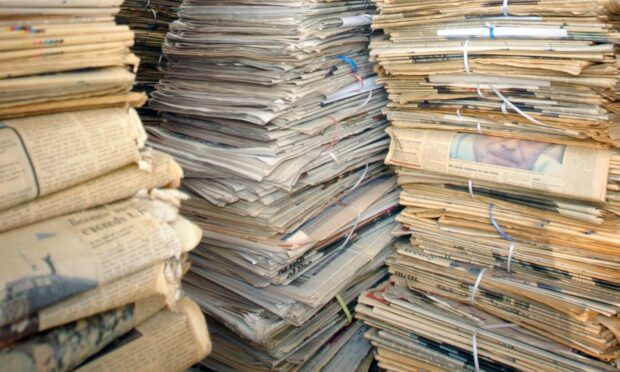Dusty old newspaper is right up there for me – somewhere alongside rain on parched fields and brand-new sports shoes – in the pantheon of great smells.
If that musty scent is filling my nostrils, it means I’m happily immersed in yellowing pages, transported to a past moment as captured by one generation or other of the journalists who came before me.
These journeys never fail to captivate, as much for the powerful insights they afford into the society of the time as about whatever single event I might be searching for.
We have done a lot of archive trawling this last fortnight as we pieced together suitably-comprehensive tributes to the life of our longest-reigning monarch.
Sadly, my part of this research was mostly online, where the access is easier but the odour less inspiring.
It got me thinking, though, about how the digital age has shifted attitudes towards the permanence of news reporting and the threat those changes pose.
The ‘right to be forgotten’ in a digital age
The issue hit the industry headlines after two separate cases of convicted criminals managing to get their illegal behaviour erased from news websites.
One secured a guarantee that the story about his admitting to possessing child pornography would disappear as soon as the conviction became “spent”. The other, an arsonist, that it would be deleted immediately.
In both cases, the titles concerned had – beyond relatively easily-fixed errors – robustly defended their journalism in the face of complaints to the press watchdog, Ipso. Yet, they then apparently sought to offer the offenders some kind of “gesture of goodwill” to resolve the disputes, rather than seek to be cleared by a formal investigation.
For the sake of journalism – and, more importantly, society – this is a worrying trend.
The “right to be forgotten” is an important and valuable new weapon for individuals to defend intrusions into their personal lives in an era of big, and fast-flowing, data. But there are important limits to its application.
One is set out in recent guidance drawn up by the Information Commissioner’s Office, the watchdog for all things data protection and GDPR.
Its draft code for journalism is clear: “There is a strong, general public interest in the preservation of news archives, which contribute significantly to the public’s access to information about past events and contemporary history.
“This is generally a weighty factor in favour of not erasing personal data from news archives.”
I was delighted to find this set out so explicitly, because it is the principle which underpins our approach to so-called “takedown” requests at the Press and Journal.
Digital era has changed privacy landscape
We have no blanket ban. There are some circumstances where, on balance, removing a story entirely has been the right thing to do, others where amendments and clarifications are justified.
Nor are we blind to the fact that the digital era has changed the privacy landscape.
Prospective employers would once only have known about an applicant’s minor youthful indiscretion if they had struck lucky while feeding miles of microfilm through a reader at the public library, or found a needle in a haystack-sized bound collection of newsprint.
Now they can turn it up with a quick Google.
That is undoubtedly not a good thing, no matter that the law optimistically says, they cannot allow it to influence their decision.
But there is a neat, established solution, endorsed by the High Court, which protects privacy without diluting the purity of the archive.
It puts the onus not on newspapers to act but on search engines – by requiring them to consider applications to “de-list” webpages, de-coupling them from searches for a given individual’s name.
This seems fair. Google et al are, after all, the newcomers who created an issue where one did not previously exist.
Newspaper records – paper or digital – matter to society
That is why directing people down that route is our standard response to demands we remove references to them on our site.
With a fair few honourable exceptions, these are mostly people who simply do not want others to know they did bad things, on occasion truly awful ones.
Sacrificing the integrity of our archives just to shield people from – mostly fully justified – embarrassment, would though seem short-sighted.
The sorts of things – and our society’s attitude to them and the scale of punishments handed down to the perpetrators of them – which social historians in decades and centuries to come will find as fascinating and invaluable as their present-day equivalents do the material they unearth once they blow the dust from volumes of Victorian newsprint and breathe in the odour of another age.
Those who defend this principle have had cause for concern in recent times – not least on digesting the possible implications of a judgment by one European court.
Sacrificing the integrity of our archives just to shield people from – mostly fully justified – embarrassment, would though seem short-sighted.
These records matter to society and we are determined to fight to preserve ours, in digital as much as we ever have in print.
Do you have a question about the way we work? Please send it to readersombudsman@pressandjournal.co.uk


Conversation